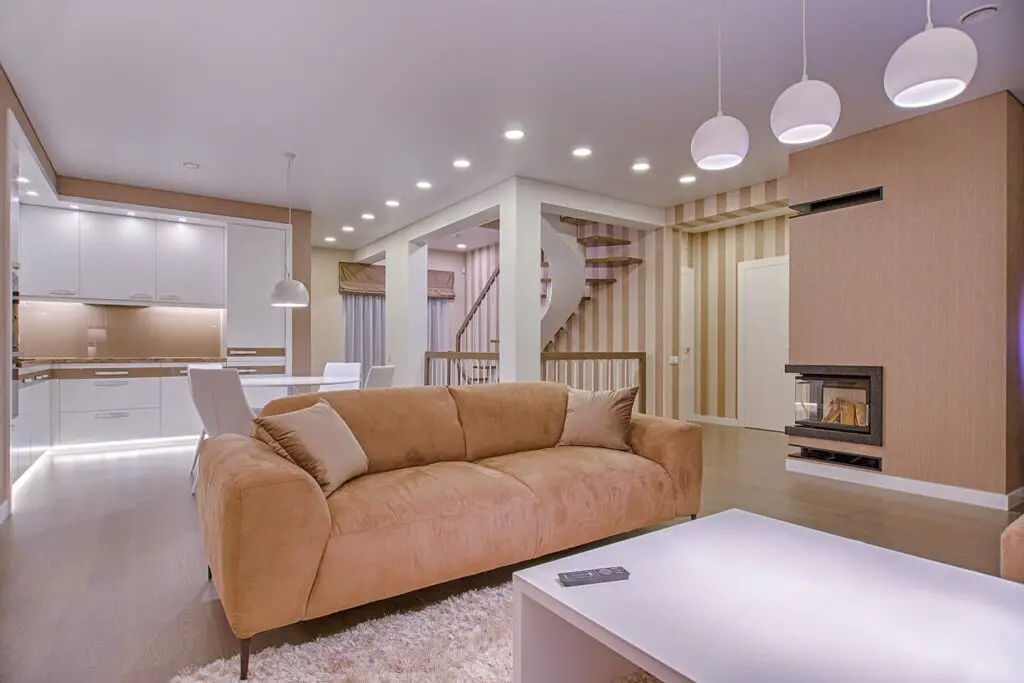As people get older, their eyesight will eventually deteriorate over time. Diminished vision can even cause a reduced quality of life and pose a safety risk for senior citizens. We offer our lighting tips to observe for improved aging in place.
1. Smart Lighting
Smart lighting is efficient and useful for senior folks with mobility and visual impairments. Instead of struggling to get out of bed to turn off the lights, seniors can control their room’s lighting using their smartphone. They can control the lights using voice commands via a virtual assistant app on their phone connected to their room’s smart lighting system.
Additional Smart Home solutions can be applied to most of the following tips for improved senior living and safety to perform actions based on various criteria automatically.
2. Accessible Light Switches
Impaired elderly vision means that their eyesight is prone to missing details. It is essential to ensure that the entrances and exits of rooms have easily located light switches.
Place light switches at a comfortable height for seniors. Use light switches that are well-pronounced and easy to find. Installing an accessible light switch shows that you care for older people’s ease of use and safety.
3. Reduce Glare
One of the problems with aging eyes is that even minimal sunlight can be uncomfortable. Older eyes are more susceptible to eye conditions, and therefore are more sensitive to harsh lighting. Not only is it distracting, but glare can also impair vision and impose danger risks to the elderly.
Reduce glare by putting up curtains and blinds, using a matte instead of a glossy finish on walls, and installing light fixtures with opaque shading. Lastly, avoid a direct line of sight to lightbulbs and conceal them with glare-free shades made from glass or fabric.
4. Dimmer Light Switches
Aside from glare-free shades to minimize glare, dimmer light switches allow the user to adjust the room’s lighting intensity. Seniors are more sensitive to harsh lighting. Providing them with the option of dimming the light to their liking will help reduce strain to their eyes and relax more.
5. Task Lighting
Seniors have many hobbies and tasks they want to carry out. Whether it is reading, knitting, sewing, or other craftwork, general lightning is not adequate for the detailed activities that they may want to take on.
Task lighting provides a concentrated source of light that allows users to perform close-up work without straining their eyes. Adjustable task lightings will help reduce strain to the sensitive eyes of the elderly.
Make sure to choose task lighting based on the tasks that they are doing. For example, an older adult who likes to read will benefit from an easy to reach reading light.
Having the option to adjust task lightings gives seniors the option to choose what best suits their needs for their specific tasks at hand.
Keep in mind that having multiple light sources can be more effective than just having a single light bulb inside a room.
6. Uniform Lighting in Rooms
Since seniors’ eyesights are sensitive, it takes longer to adjust to each room’s different lighting levels in the house. For instance, a senior who came from a dimly-lit place will take a longer time to adapt to a well-lit room.
Address this issue by keeping a consistent lighting level for adjacent rooms, which will allow seniors to feel more comfortable and at ease when moving from one place to another. Seniors should avoid drastic light changes to protect their eyesight.
7. Sufficient Lighting in Thresholds and Other Danger Zones
The elderly have difficulty seeing details and have a reduced sense of depth perception, leading to accidental falls when using stairs or ramps.
Ensure adequate light for thresholds and transition spaces such as stairs, ramps, and doorways to prevent slips and falls. These are accident-prone areas due to the change in levels and inconspicuous patterns, which are difficult for seniors to discern.
To avoid threshold accidents:
- Use prominent patterns that stand out from the background.
- Make use of fluorescent tape or paint edges and railings with different colors.
- Make sure that there is sufficient lighting for these areas.
The bathroom, shower, or bathtub are danger zones that you should prepare for as well. Insufficient lighting can make wet slippery floors go unnoticed, leading to possible accidents. Make sure to install task lightings for these high-risk areas to keep elderly folks safe.
You Deserve the Best Lighting as You Age
Even with poorer eyesight, you deserve safe and quality living best suited for their needs. It is essential to have proper lighting and illumination in their homes that will allow them to maintain an active, efficient, and safer lifestyle.
Modifying your home to best suit your unique needs may take some effort. Still, once you create an illuminated and safe space, you will ensure the best quality of life you deserve.






